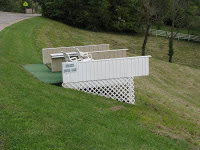Once off campus, there is very little to see in Morehead. The “old” courthouse (not that old) is now an Arts Center. It is clear that the Center is uncertain what to do with the old jail – a neo-gothic structure behind the old courthouse that was constructed as a Works Progress Administration in 1938. Peering in its only window (on the door), I saw the following:
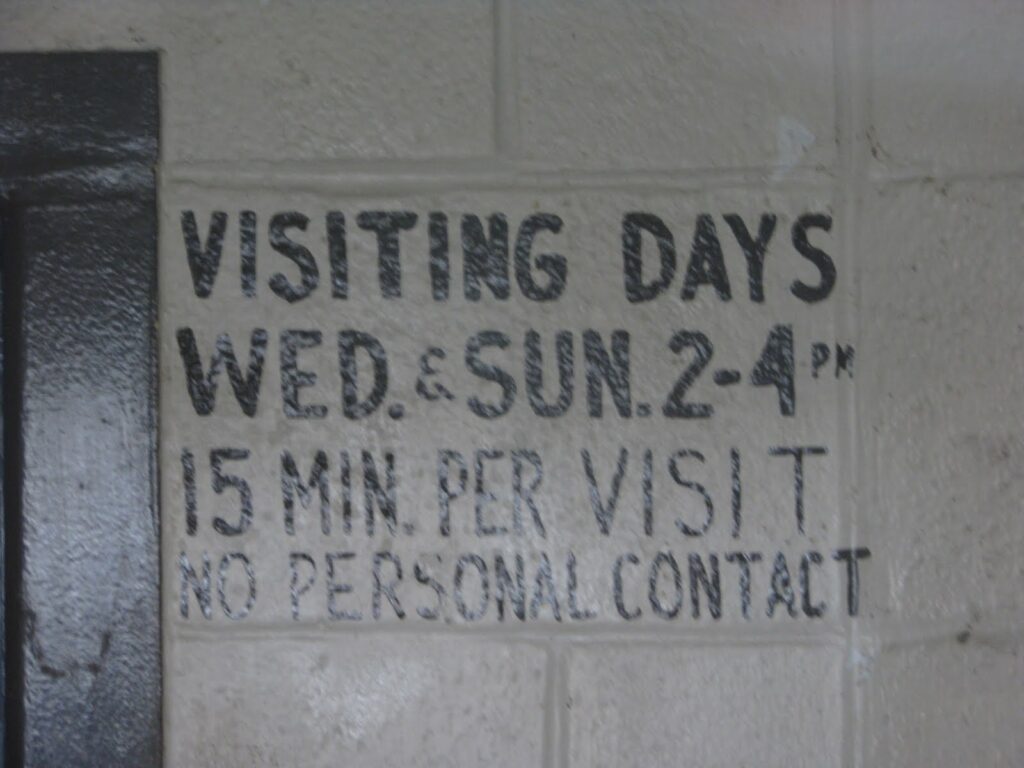 Additionally in Morehead, the First Christian Church has a forty-foot (diameter) labyrinth on its grounds that is open to the public. Walking the seven-circuit path – with St. Francis of Assisi in its center – was a wonderful experience at the end of a long day during which I saw so much (family, Cave Run Lake, the old Frenchburg School, the gravel road).
Additionally in Morehead, the First Christian Church has a forty-foot (diameter) labyrinth on its grounds that is open to the public. Walking the seven-circuit path – with St. Francis of Assisi in its center – was a wonderful experience at the end of a long day during which I saw so much (family, Cave Run Lake, the old Frenchburg School, the gravel road).
Tag: towns
No Destination: Pactolus
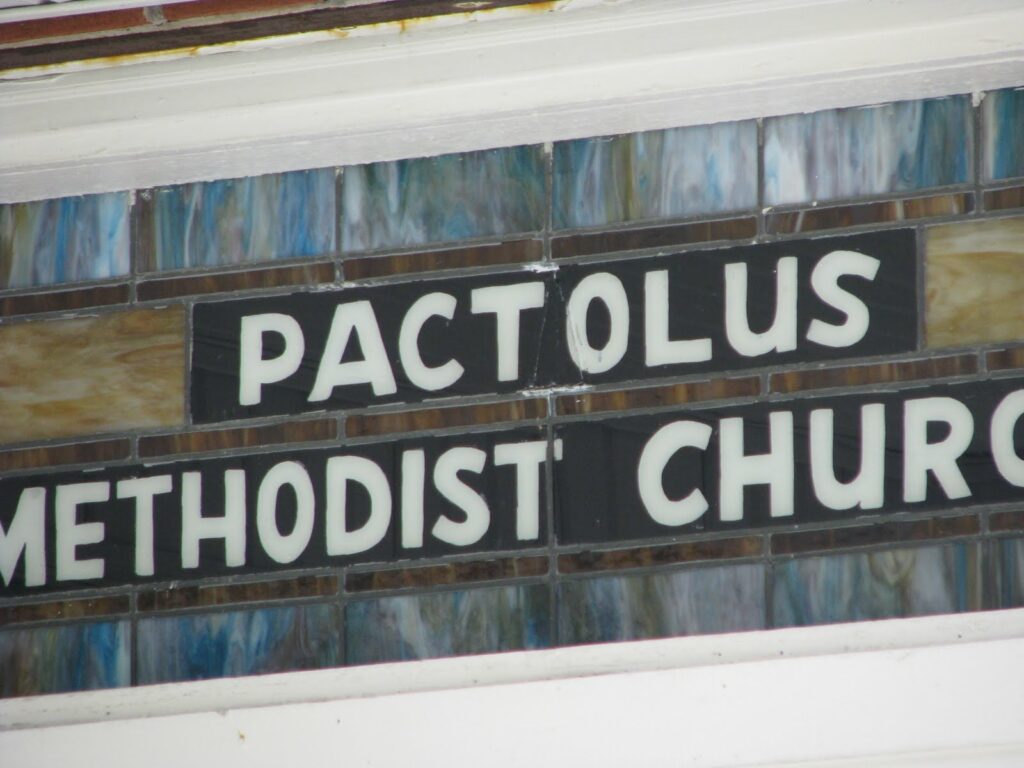 Pactolus. I’ve been here so many times. My father-in-law’s family was one of the founding families of the church (Pactolus Methodist) pictured above, c. 1922, and the family remains in the area.
Pactolus. I’ve been here so many times. My father-in-law’s family was one of the founding families of the church (Pactolus Methodist) pictured above, c. 1922, and the family remains in the area.
Iron furnaces around this part of the state were quite common and it is believed that the Pactolus furnace (no longer in existence, last blast in 1835) was the first in the state. This unincorporated community is considered a part of Grayson.
No Destination: Grayson
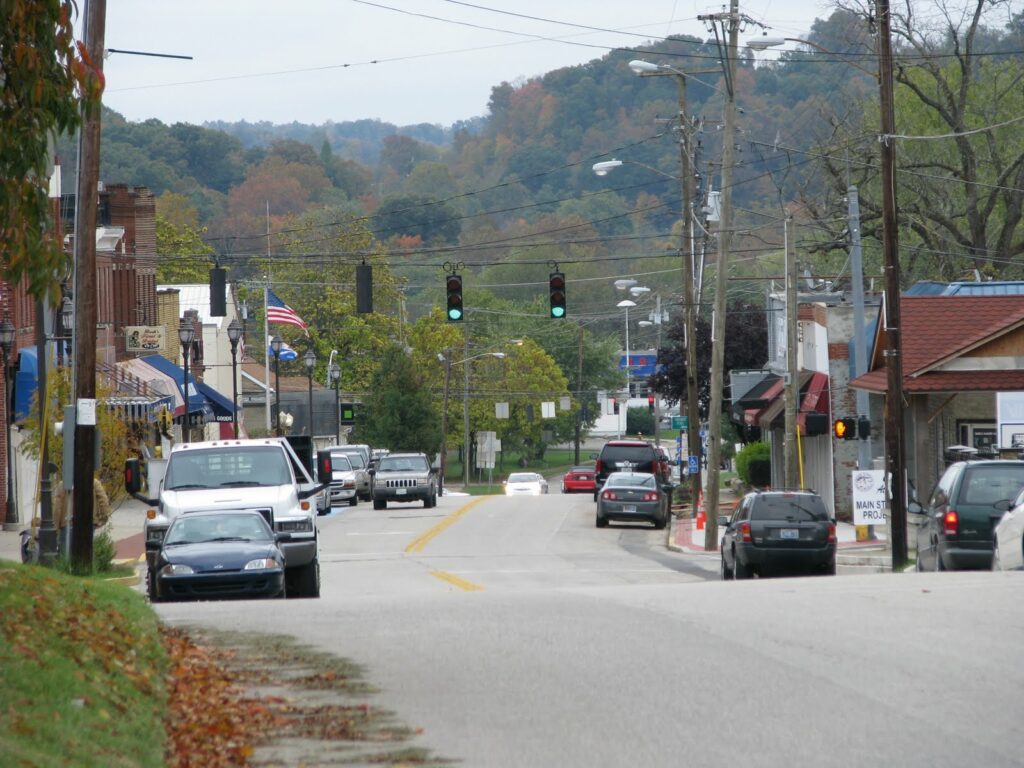 At the convergence of the AA Highway and Interstate 64, the formerly sleepy town of Grayson is busy. Main Street (pictured above) is quiet as the new main strip is the Carol Malone Blvd. (named after an opera singer from Grayson). It was founded in the early 1800s by salt makers and was originally known as Crossroads, but the community was renamed Grayson when it became the county seat of Carter in 1838.
At the convergence of the AA Highway and Interstate 64, the formerly sleepy town of Grayson is busy. Main Street (pictured above) is quiet as the new main strip is the Carol Malone Blvd. (named after an opera singer from Grayson). It was founded in the early 1800s by salt makers and was originally known as Crossroads, but the community was renamed Grayson when it became the county seat of Carter in 1838.
The town is also home to my wife’s family and Kentucky Christian University. I will return to Carter County many times with many more posts.
No Destination: Farmers
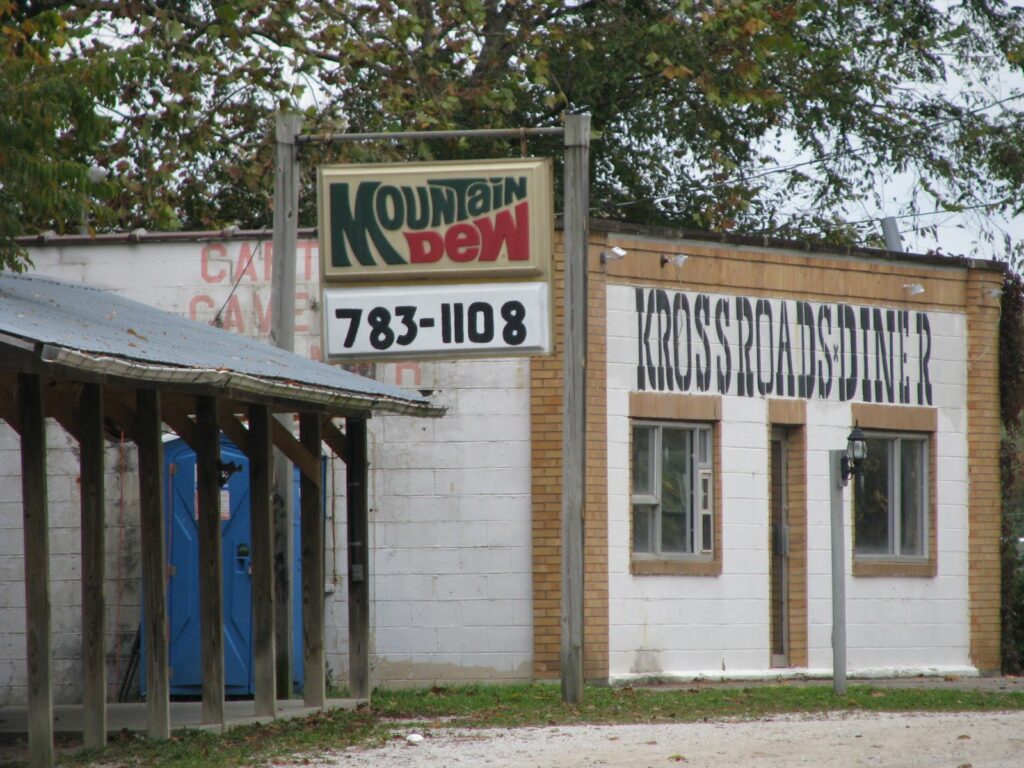 In the western part of Rowan County, the county’s first community began to be settled around 1792 on the banks of the Licking River. The town, CrossRoads, was named for obvious reasons. Hard timber in the area made CrossRoads (later renamed Farmers in 1882) a boom-town, until timbering became exhausted c. 1900. By then, much of the commerce had shifted ten miles east to the county seat: Morehead.
In the western part of Rowan County, the county’s first community began to be settled around 1792 on the banks of the Licking River. The town, CrossRoads, was named for obvious reasons. Hard timber in the area made CrossRoads (later renamed Farmers in 1882) a boom-town, until timbering became exhausted c. 1900. By then, much of the commerce had shifted ten miles east to the county seat: Morehead.
No Destination: Frenchburg
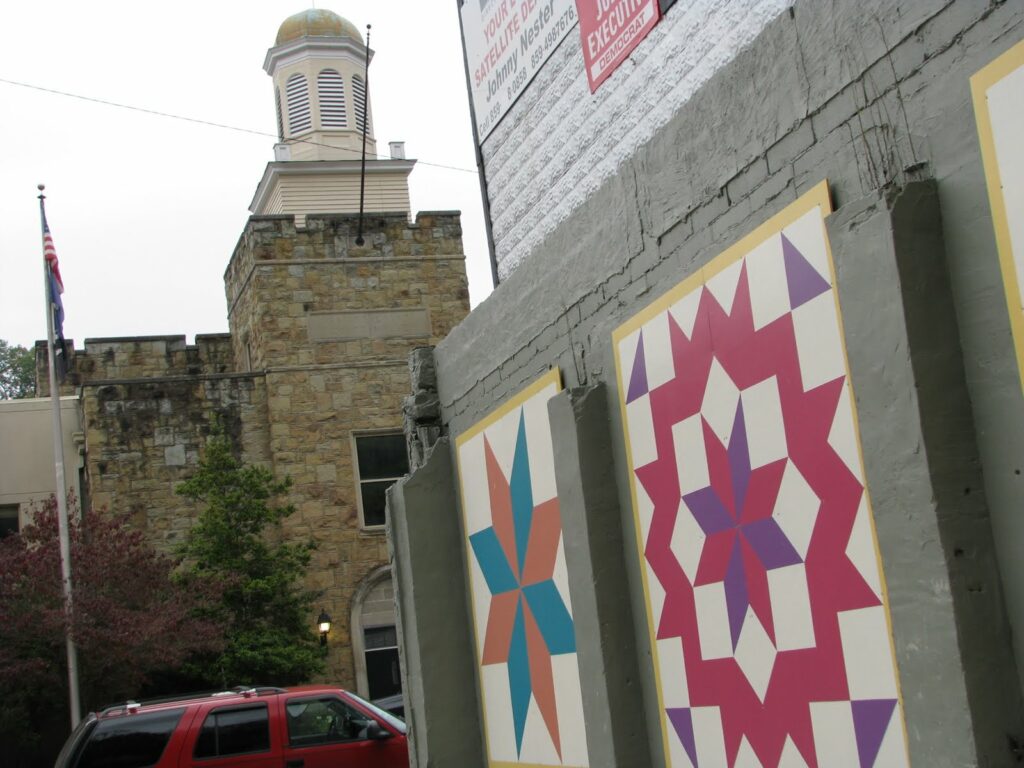 Menifee’s County seat, Frenchburg, has (c. 2000) a population of 551. This small-town was established in 1869 to be the county seat and is the only incorporated community in this rural county.
Menifee’s County seat, Frenchburg, has (c. 2000) a population of 551. This small-town was established in 1869 to be the county seat and is the only incorporated community in this rural county.
The county was named after Congressman Richard Menefee, but the state general assembly misspelled the name when chartering the county. In a Congressional 1837 election, Menefee defeated Richard French. French, a lawyer and judge, is the namesake of Frenchburg.
Beyond the already discussed and defunct Frenchburg School, there is little in this town. Pictured above are a few of the ‘quilts’ that are frequently found in the area and a corner of the Menifee County courthouse. It is a really cool building…I’ll save the details for Nate.
No Destination: Mount Sterling
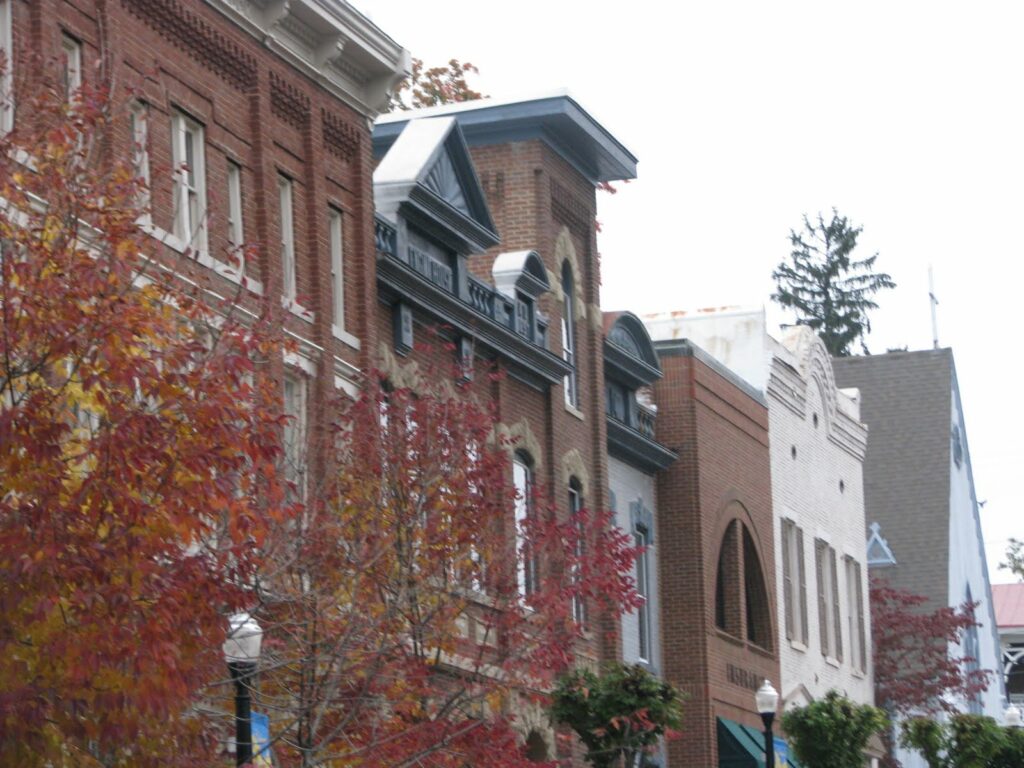 When Nate visited the Montgomery County courthouse, he was underwhelmed by the courthouse but very impressed with the “painstakingly restored” buildings in Mount Sterling. I couldn’t agree more. The historical preservation and adaptive reuse in this community.
When Nate visited the Montgomery County courthouse, he was underwhelmed by the courthouse but very impressed with the “painstakingly restored” buildings in Mount Sterling. I couldn’t agree more. The historical preservation and adaptive reuse in this community.
One building, with markings of “Engine House,” “City Court,” and “Library” now has a banner in front noting the new home of the Montgomery County Historical Museum. The old city jail, “The Bell House,” was constructed in 1815 and restored around 1990 by the local historical society.
Mount Sterling was a regular scene of Civil War activity. Possession of the city changed a dozen times during the War; the courthouse was burned by Confederate forces in December of 1863; the Battle of Mount Sterling (March 22, 1863) resulted in only 12 deaths, but resulted in the capture of 438 prisoners and significant Union supplies; and in June 1864, Gen. Morgan and his horsemen took the vault key from the cashier of Farmer’s Bank and left town with over $60,000.
One of Morgan’s men (Lt. Witherspoon) was tried in a civil action in 1866, but the judgment against Witherspoon was reversed on appeal because robbery was not unlawful under the laws of war.
No Destination: Augusta
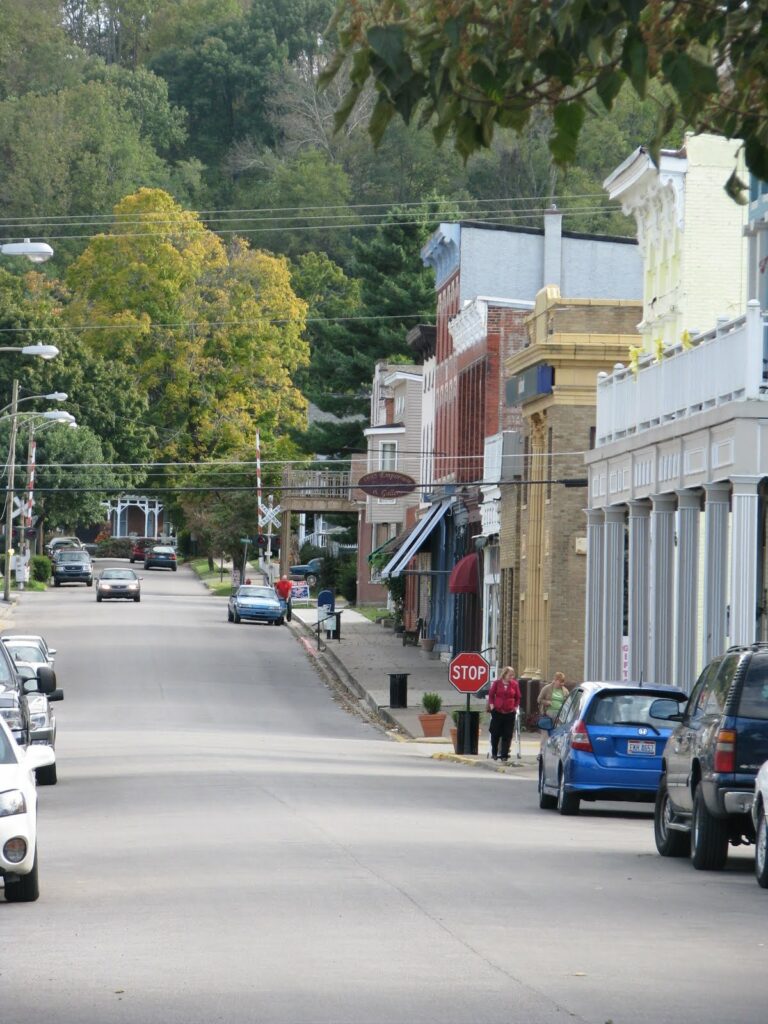 Kentucky history laureate, the late Dr. Thomas Clark listed Augusta as one of Kentucky’s Eleven Treasures that Helped Shape the Commonwealth. Augusta is a fine town on the Ohio River of over 2,000 people. Because I arrived in Augusta in late afternoon, I plan to return so that I might spend more time in this community.
Kentucky history laureate, the late Dr. Thomas Clark listed Augusta as one of Kentucky’s Eleven Treasures that Helped Shape the Commonwealth. Augusta is a fine town on the Ohio River of over 2,000 people. Because I arrived in Augusta in late afternoon, I plan to return so that I might spend more time in this community.
Augusta was the county seat of Bracken County from the creation of the county until the seat was moved to the more centrally located Brooksville in 1839. While this may seem unusual today, Bracken County was once quite large geographically. It contained parts of what is now Bracken, Robertson, Harrison (eastern), Bourbon, Nicholas (most) and Mason (southern) counties.
The town is in terrific condition (especially when compared to neighboring Dover). On a Sunday afternoon, tourists were in great number and shops were open. Though no longer the county seat, Augusta is the center of Bracken County life.
Augusta has much to owe its most famous residents: the Clooneys. Rosemary Clooney owned a summer home in Augusta, while her brother (journalist, newsanchor and gameshow host Nick) continues to live in Augusta. Of course, it is Nick’s son (actor George) who is today’s most well-known Clooney; George attended and graduated from the Augusta High School (pictured below).
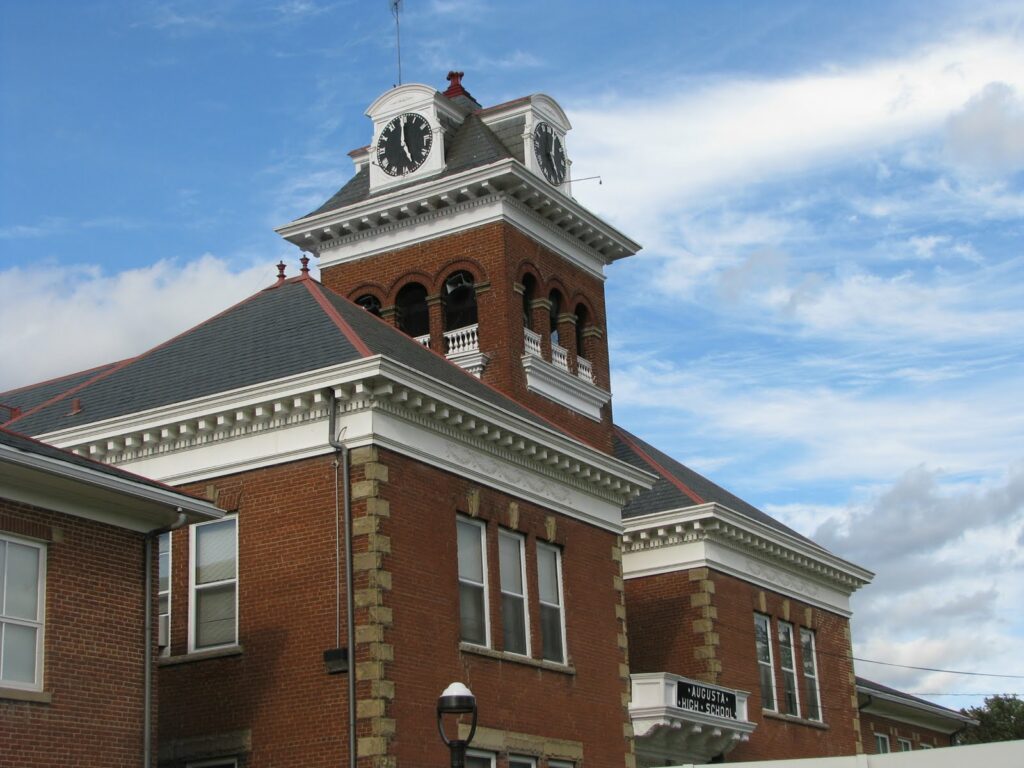 Augusta is also the home of Miss America 2000, Heather Renee French (Henry).
Augusta is also the home of Miss America 2000, Heather Renee French (Henry).
No Destination: Dover
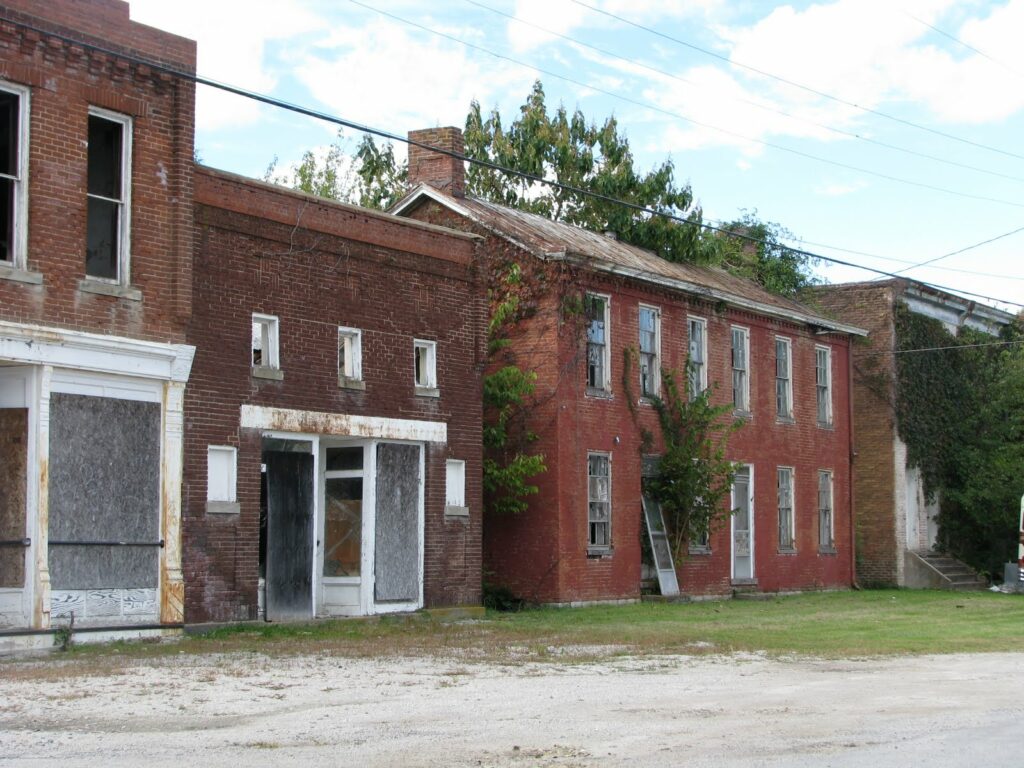 Founded in 1818 and incorporated in 1856, the Mason County community of Dover lies just north of the AA-highway and on the Ohio River.
Founded in 1818 and incorporated in 1856, the Mason County community of Dover lies just north of the AA-highway and on the Ohio River.
Here is a description, c. 1860: “The village contains several churches, large steam flouring and saw mills, some twelve or fifteen stores and tobacco warehouses, and an equal number of mechanical trades. Population about 900.”
In 1963, “A beautiful town, located on a fertile plateau with a population of just over 700. It has a general store, schools, a fine youth centre, seven churches, a City Marshall, or policeman; a Police Judge and 24 volunteer firemen. The city is also excited as the mighty duPont has acquired 1,000 acres of land for industrial development.”
Then, April 23, 1968. A tornado destroyed 115 of the town’s 127 homes. Only three churches were rebuilt. All students were sent to Maysville for school and the city no longer offers city services. And duPont never built its factory. Despite the 328 residents (est. 2008), Dover remains a ghost town.
No Destination: Minerva
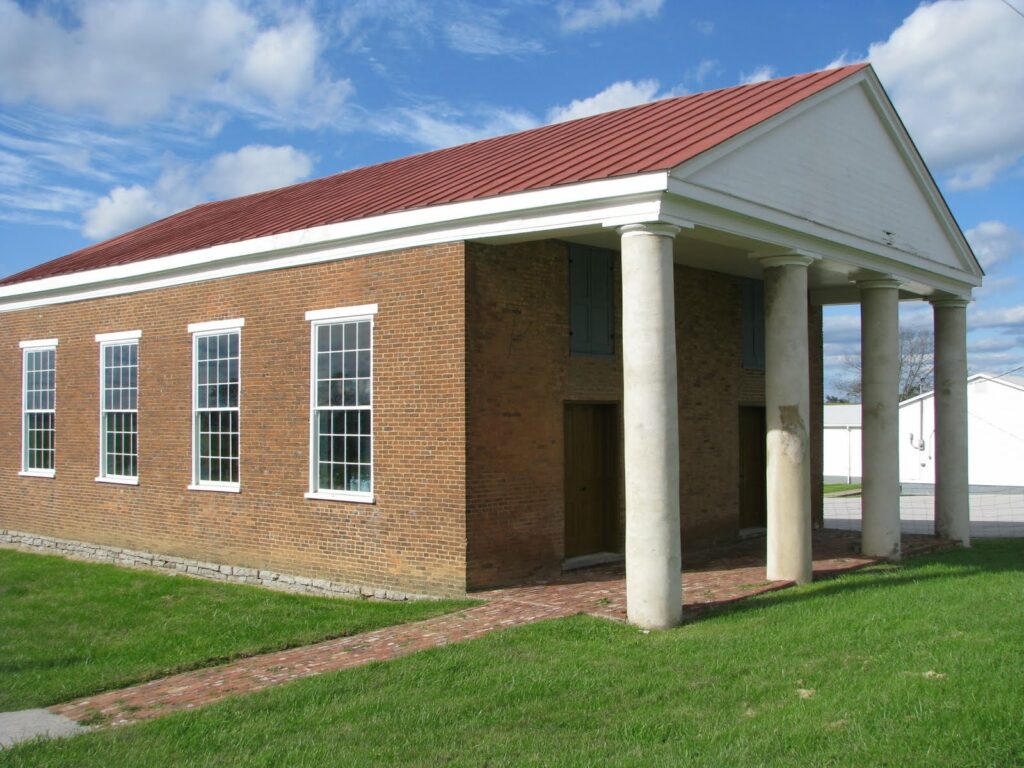 I’m not sure what community in Kentucky has the highest number of churches per capita (if you know, please advise!), but it very well could be Minerva, Kentucky. This Mason County hamlet, with a population of about 250 (as of 1876), has four churches. (According to the new Minerva Baptist Church, there are six churches and 115 people today.)
I’m not sure what community in Kentucky has the highest number of churches per capita (if you know, please advise!), but it very well could be Minerva, Kentucky. This Mason County hamlet, with a population of about 250 (as of 1876), has four churches. (According to the new Minerva Baptist Church, there are six churches and 115 people today.)
The four churches – Baptist, Methodist, Catholic and Full Gospel – are each architecturally unique. The Catholic church is least impressive – a late-20th century brick church. Both the Methodist (built in 1894) and the Full Gospel churches appear to be the quintessential white-siding country churches.
The Baptist Church, though no longer in use, is the most impressive. The church began as a “Traveling Church” in 1793 and the Baptist congregation formed about 1799. Services were held regularly on the site until about 1900. Sold in 1930 for $280 and then used as a tobacco barn, the Bracken Baptist Church structure was completely restored in 2005. Constructed in 1842, this Greek Revival building was added to the National Register in 1983.
On a religious note, the Baptist congregation split on two occasions. The first time was in 1805 (over slavery). The second was in 1829 during the Campbell movement, which was the beginning of many of the Christian Churches/Disciples of Christ churches that are prevalent in Kentucky today. It is curious that a movement which sought church unity was the cause of schism.
Minerva is most notably the birthplace (Dec. 31, 1884) of Supreme Court Justice Stanley F. Reed. Nominated by FDR, Reed was the last Supreme Court justice to not graduate from law school (he outserved the later-nominated Robert Jackson by three years). He served on the High Court from 1938 to 1957 and is the longest-serving Justice in Supreme Court History. One of Reed’s most famous quotes comes from his dissent in Illinois ex rel. McCollum v. Board of Education, 333 U.S. 203 (1948) (first case to declare that a state had violated the Establishment clause): “A rule of law should not be drawn from a figure of speech.” Reed was referring, of course, to the wall of separation between church and state.
No Destination: Mount Olivet
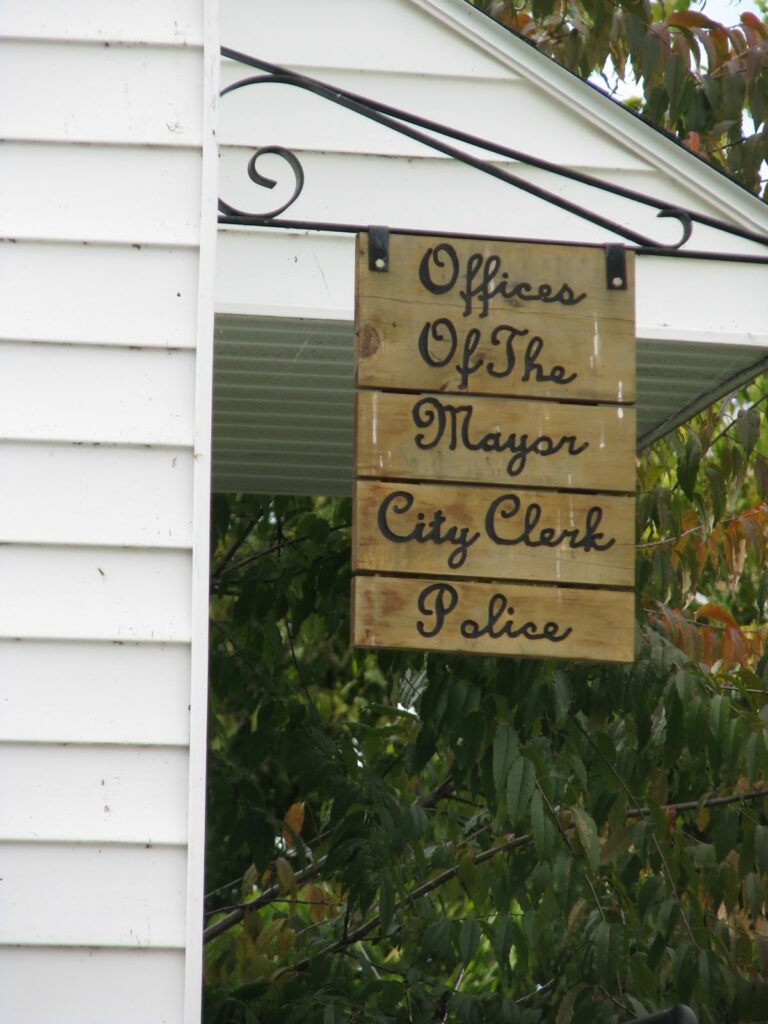
Robertson County is Kentucky’s smallest county by population (2000 census: 2,266 people). Geographically, it is also quite small (100 square miles). As of the same census, the county seat (Mount Olivet) had 289 residents. Needless to say, this is smalltown USA.
Mount Olivet was founded in 1820 and was named after the Mount of Olives in Israel. The town consists of a crossroads, a church (probably more, but I only encountered one), a golf driving range and government offices.
I will leave the description of the courthouse up to Nate. The new judicial center is complete and it was constructed adjacent to the old courthouse. Together, it is quite a large structure. A Mount Olivet resident living across the street from the courthouse remarked that “it is four-times the courthouse we need.” The old courthouse seems to have been gutted so that a modernized courthouse can sit inside the historic building.
The office of the mayor, city clerk and police appears to be a remodeledd two-bedroom house. It screams smalltown. I especially loved the identifying sign, pictured above.
Golf driving range? Yes. Goddard’s Driving Range will not be found on any listing of golf courses or driving ranges: the two tees direct into the back yards (downhill) of who I assume would be the Goddard’s. A note tells you the distances of the three holes, where to put your $5 and where you can find a bucket of balls (in a nearby shed). I loved it. If only I had brought my clubs…
